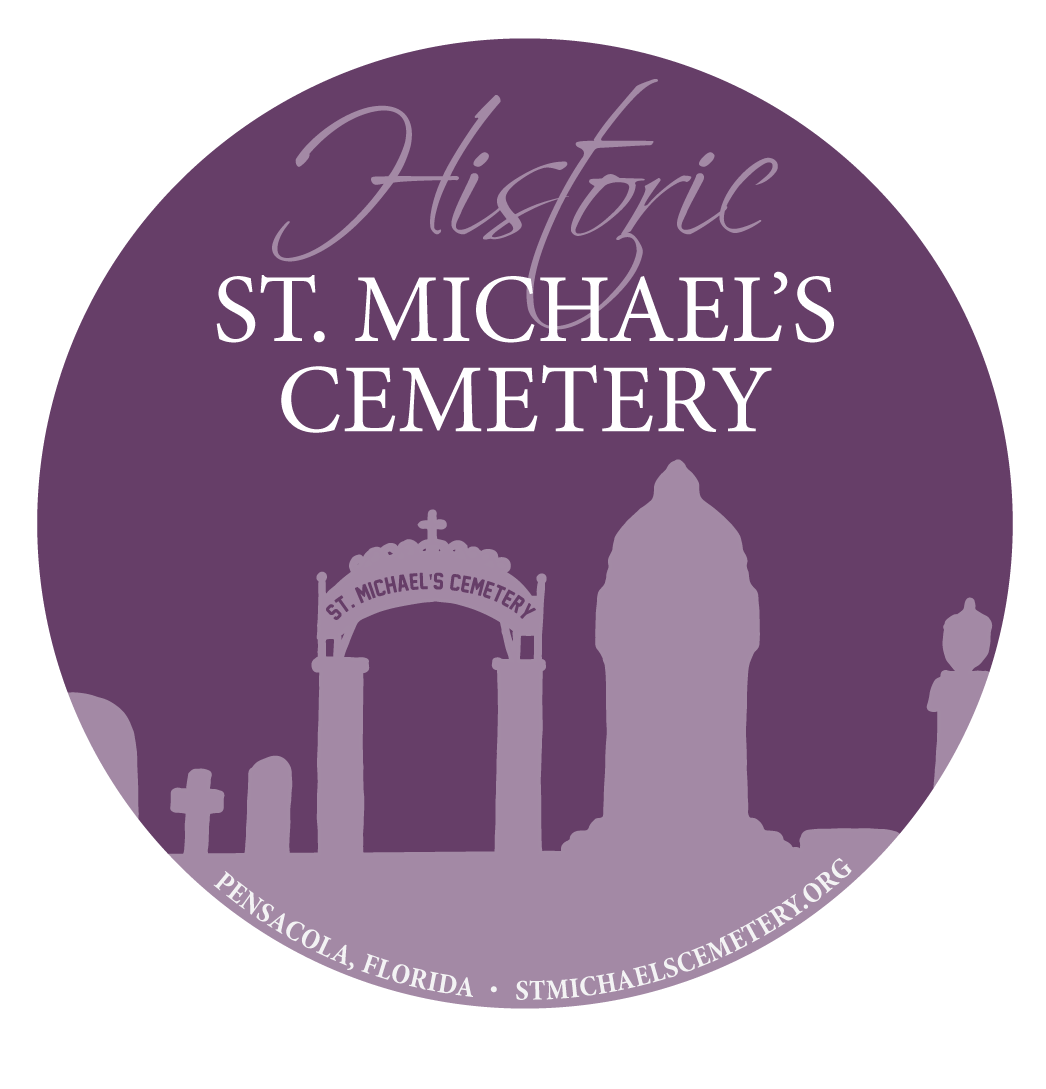Cemeteries are integral components of communities and are generally established adjacent to the critical resource needed for their support - a population base. St. Michael’s Cemetery, once a rural cemetery serving a colonial population, is today an eight- acre green space in the heart of urban, historic Pensacola, Florida. It is one of the two oldest extant cemeteries in the state of Florida (the other being Tolomato Cemetery in St. Augustine) and reflects the social history of the community it is associated with. The cemetery is on the National Register of Historic Places as a contributing property to the Pensacola Historic District.
Historical research and early maps indicate that the land in and around the modern cemetery was in use as a burying ground beginning in the mid to late 18th century. The earliest surviving above ground markers in St. Michael’s Cemetery, however, are associated with Pensacola’s Second Spanish Period (1781-1821). The cemetery is an open-air museum that is a testament to the diverse history of Pensacola.
Pensacola drew immigrants from around the world. The cemetery is the resting place of Captains of Industry, victims of Yellow Fever epidemics and steam ship explosions, along with those who died in child birth, as infants, and of old age.
There are approximately 3200 marked graves in the cemetery with subsurface anomalies possibly several thousand unmarked graves. Tombstones in the cemetery reflect not only status and ethnicity of individuals but also reflect society as a whole on the Florida Gulf Coast frontier. One has only to walk down the extant colonial road bed at the south end of the site to experience the strong sense of place and identity in the cemetery; a feeling of community.
Today, primary stewardship for the cemetery is provided by St. Michael’s Cemetery Foundation of Pensacola, Inc. The nonprofit Foundation works with the University of West Florida and many community groups and individuals to preserve this historic site. Research at historic St. Michael’s Cemetery is focused on expanding our knowledge of the history and physical development of our community.
One project, The Search for the Hidden People of St. Michael’s Cemetery, identified unmarked burials at the site utilizing remote sensing techniques. In-depth historical research focused on the burial patterns reflected in the Pensacola Bay area, individuals who lost their lives in Pensacola during the colonial period, and how the landscape of St. Michael’s evolved over time in relationship to the community it serves. An in-depth history of the cemetery, results of the remote sensing survey, landscape reconstruction, and a colonial mortality database is now available. The ongoing research, conservation, and preservation efforts at St. Michael’s Cemetery are an excellent example of preserving our past to benefit our future.
“St. Michael’s Cemetery is a beautiful piece of Pensacola’s history. A must visit for any history buff.”



